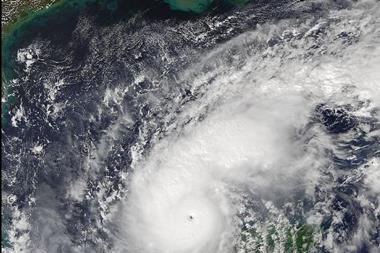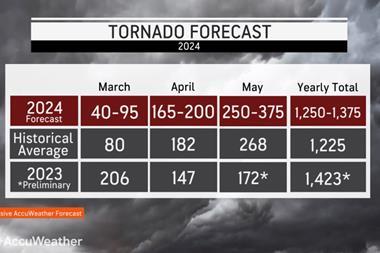2023 highlighted the need for a proactive approach to risk identification, mitigation and adaptation including a renewed focus on downward counterfactual analysis.
Global insured nat cat losses in 2023 exceeded US$100 billion, for the fourth consecutive year.
Such losses are becoming the norm, not the exception, according to the latest Natural Catastrophe Review released by WTW.

And with a total economic loss surpassing US$350 billion, it has become clear that the protection gap remains a critical issue.
Key report findings include:
- Secondary perils in focus: the economic and societal impacts of secondary perils were a focal point for risk managers in 2023 following a year dominated by severe convective storms, wildfires, droughts, and floods
- Record breaking storms: insurers in the US saw the costliest severe convective storms (SCS) year on record, with total claims exceeding $50 billion
- Reassessing thresholds: in recent years, insurers have viewed annualised losses in the region of $20 billion to $30 billion from US convective storms as indicative of a challenging year. But this threshold should now be reevaluated after the unprecedented damage seen in 2023 and the continued growth of property exposures.
What does it mean for risk managers?
As 2023 drew to a close, the economic and societal impacts of “secondary” perils became a focal point for risk managers following a year dominated by severe convective storms (SCSs), wildfires, droughts and floods.
Cameron Rye, head of modelling research and innovation, WTW Research Network, said: “In a world increasingly shaped by aging infrastructure, climate change, and urban growth into risk-prone areas, we are now facing disasters that were either not anticipated or deemed unlikely just a few years ago.
“Beyond economic damages, 2023 highlighted the need for a proactive approach to risk identification, mitigation and adaptation.”
This evolving situation necessitates a pivot toward not just recognising but actively preparing for a wider array of risks, some of which might have been previously dismissed or underplayed.
Key risks that shaped 2023
- In the U.S., insurers saw the costliest SCS year on record, with total claims exceeding $50 billion. Meanwhile, in the second half of 2023, Hawai’i witnessed its deadliest wildfire in recent history, claiming over 100 lives.
- In Europe, northern Italy faced an unprecedented hailstorm, and certain countries — including Portugal, Spain, Italy and Greece — were hit by severe wildfires.
- The Panama Canal experienced its worst drought since it opened in 1914, leading to major global shipping disruptions.
- Flooding caused destruction globally, with notable events in Slovenia, New York City, Hong Kong and Beijing.
- Storm Daniel, in particular, brought extensive flooding to the Mediterranean region, culminating in catastrophic dam failures in Derna, Libya.
- In the Northern Pacific, tropical cyclone activity in 2023 was marked by two particularly damaging storms, Doksuri and Otis, that underwent rapid intensification before landfall.
- From a geological perspective, 2023 saw the devastating Kahramanmaraş earthquakes in Türkiye in February and the Mw 6.8 earthquake in Marrakech, Morocco, in September.
How to tackle the threats
One way risk managers can tackle this challenge is by examining how historical events could have resulted in worse outcomes, also known as downward counterfactual analysis.
For example, in 2018, Hawaii experienced wildfires very similar to those in 2023 affecting West Maui. Although the 2018 fires were less severe, exploring how they might have escalated could have better prepared risk managers for the significantly more destructive wildfires in 2023.
“By examining what-if scenarios, organisations and governments can gain insights into potential vulnerabilities”
Similarly, a 2022 research paper on historical flooding in Libya warned that a recurrence of a major event, such as the devastating 1959 floods, could result in dam failures in Derna. Despite this prediction, the warnings went unheeded, and the anticipated risk materialised following storm Daniel in 2023.
The report says: “The importance of such foresight cannot be overstated, especially given that the historical record alone does not capture the full range of potential risks from rare natural hazards.
“By examining what-if scenarios, organisations and governments can gain insights into potential vulnerabilities and develop strategies for a more resilient future.”




















No comments yet